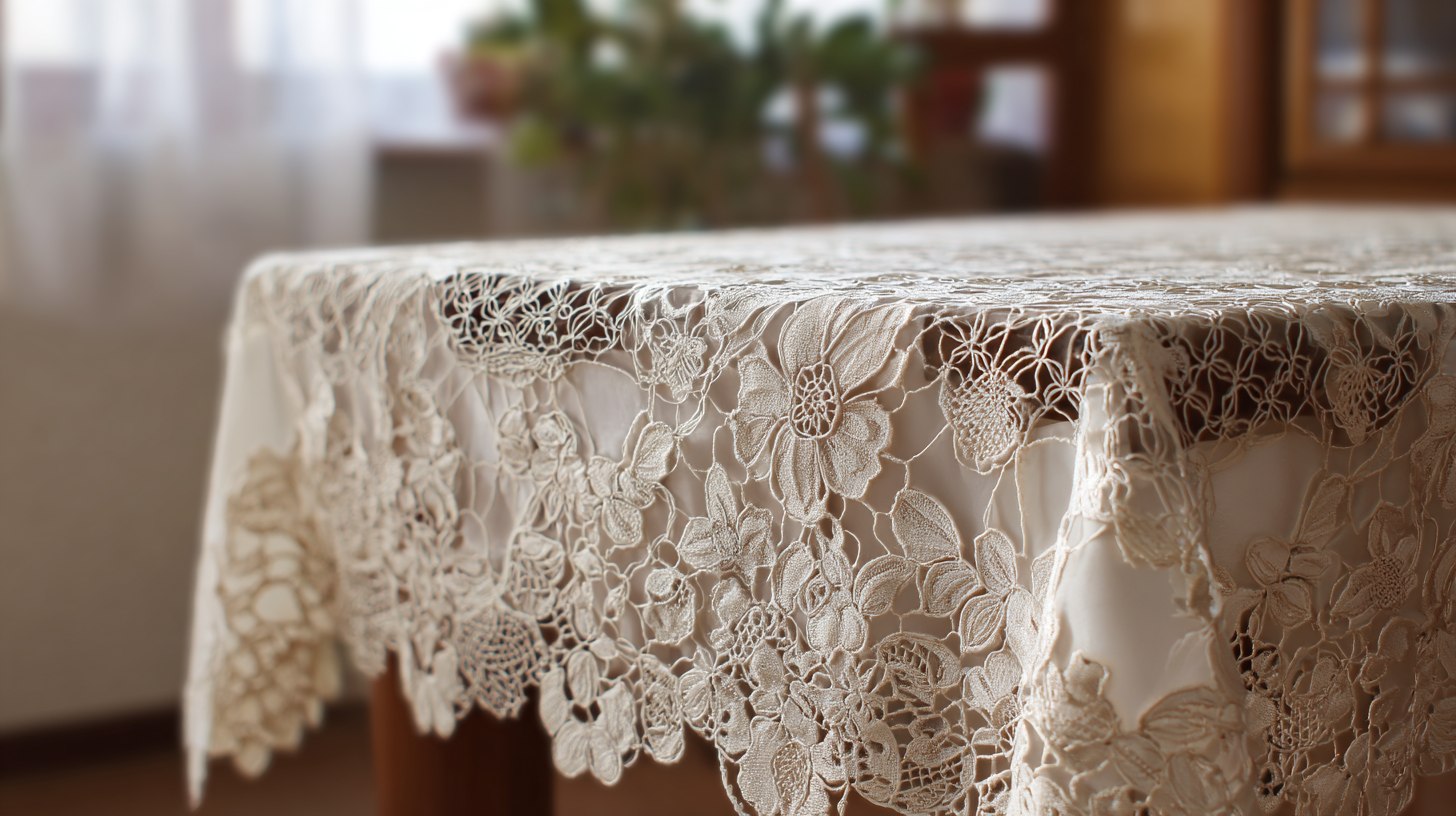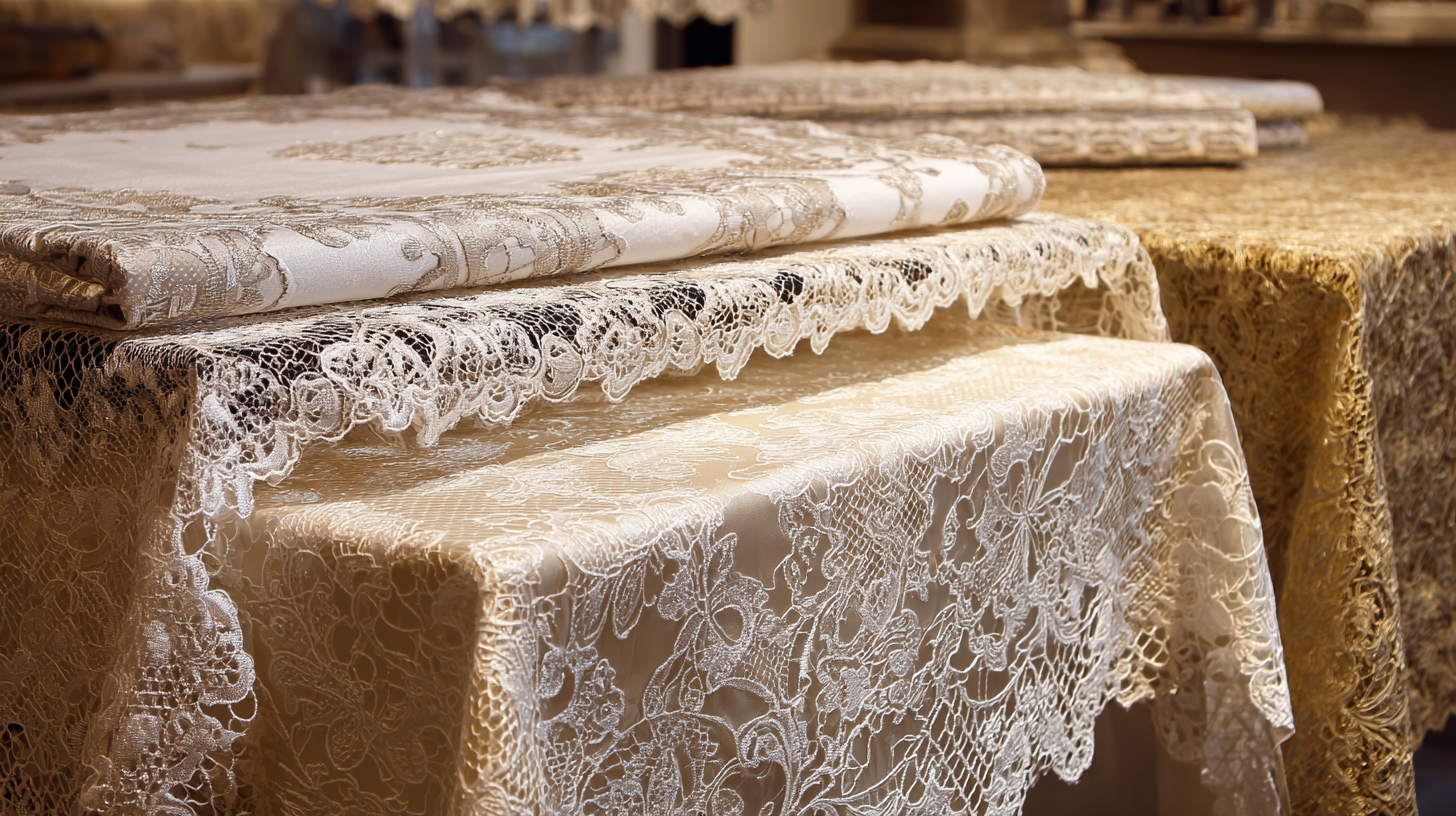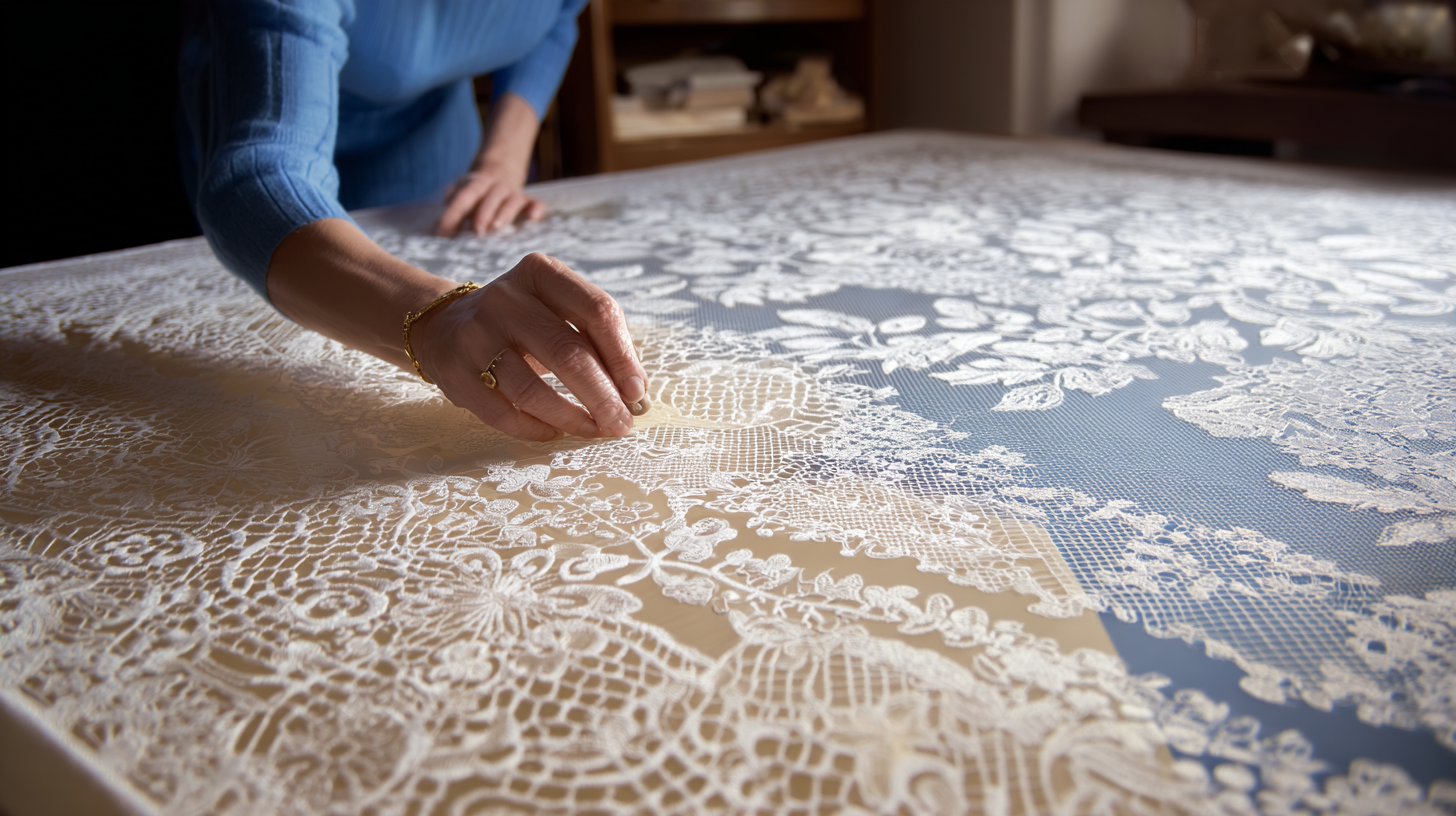In the realm of home decor, the choice of table linens can significantly enhance the aesthetic appeal of any dining space, and lace tablecloths have emerged as a timeless favorite among consumers. According to a recent industry report by Market Research Future, the global home textiles market is projected to reach approximately $160 billion by 2025, with specialty items like lace tablecloths driving notable traction due to their unique craftsmanship and elegance. Additionally, as more homeowners prioritize quality and sustainability in their purchases, understanding the industry standards surrounding the production and maintenance of lace tablecloths becomes essential. These standards not only influence the durability and appearance of the fabric but also encompass crucial aspects of customer service and repair costs, ensuring that consumers receive exceptional value for their investments. This blog will delve into these elements, providing insights on how to select, care for, and maintain lace tablecloths to elevate your home decor.

When selecting high-quality lace tablecloths, several key characteristics should be at the forefront of your decision-making. First and foremost, the type of lace used is crucial. Look for intricate patterns made from durable materials like cotton or polyester blends, which not only provide elegance but also ensure longevity. Natural fibers tend to offer a more luxurious feel and contribute to the overall drape of the tablecloth, enhancing its visual appeal.
Another important aspect to consider is the craftsmanship involved in creating the lace. Handcrafted lace often displays unique designs and superior detailing that machine-made lace may lack. Pay attention to the stitching quality; clean, consistent seams indicate good workmanship and durability. Additionally, a well-made lace tablecloth will have finished edges that prevent fraying, ensuring it retains its beauty over time. By focusing on these characteristics, you can choose a lace tablecloth that not only meets aesthetic standards but also serves as a lasting piece in your home decor.
When it comes to crafting exquisite lace tablecloths, thread count is a pivotal factor that significantly influences both durability and aesthetics. According to the Textile Research Journal, higher thread counts typically enhance fabric strength, which is essential for the longevity of lace products. Most quality lace tablecloths boast a thread count ranging from 300 to 600, striking a balance between delicacy and robustness. This range not only ensures a visually appealing texture but also helps maintain the structural integrity of the lace, allowing it to withstand regular use without fraying or tearing.
Moreover, a study published in the Journal of Textile Science found that lace with higher thread counts contributes to a more intricate design. The tighter weave permits detailed patterns and broader versatility in design aesthetics, expanding options for consumers seeking elegance in their table settings. Thus, understanding the importance of thread count not only helps consumers choose the best lace tablecloths but also encourages manufacturers to focus on high-quality production standards that meet industry benchmarks. Ultimately, a well-crafted lace tablecloth with an optimal thread count serves as both a functional piece and a work of art.

When it comes to crafting the best lace tablecloths, the choice of fabric plays a crucial role. Cotton and polyester are two popular options, each with its unique properties that cater to different needs. According to a recent industry report by Grand View Research, the global market for table linens is expected to reach USD 3.2 billion by 2027, driven largely by consumer preferences for high-quality fabric. Cotton is known for its breathability and softness, providing a natural look that appeals to those who appreciate traditional aesthetics. In contrast, polyester is recognized for its durability and stain resistance, making it a practical choice for high-traffic environments.
When selecting the right fabric type for lace tablecloths, consider how you plan to use them. For formal occasions or special events, cotton lace can elevate the decor with its elegance and texture. However, if you need a tablecloth that withstands spills and frequent use, polyester may be the more suitable option.
**Tip:** Always check the care instructions of your lace tablecloths. Cotton may require delicate washing and ironing, while polyester typically allows for easier maintenance through machine washing and quick drying.
In addition to fabric choice, the weight of the material is also significant. Heavier fabrics tend to drape better and resist wind during outdoor events, whereas lighter fabrics can offer a more casual touch suitable for everyday dining.
**Tip:** To maintain the quality of your lace tablecloths, store them in a cool, dry place and avoid exposure to direct sunlight to prevent fading.
| Fabric Type | Durability | Maintenance | Cost | Eco-friendliness |
|---|---|---|---|---|
| Cotton | Moderate | Machine washable, may need ironing | Medium | Biodegradable |
| Polyester | High | Easy to clean, wrinkle-resistant | Low | Not biodegradable |
| Cotton-Polyester Blend | High | Low maintenance, machine washable | Medium | Partially biodegradable |
When it comes to lace tablecloth designs, the market is witnessing a fascinating evolution fueled by both consumer preferences and emerging trends. One dominant trend in recent years is the resurgence of vintage-inspired designs, which cater to a longing for nostalgia and timeless elegance. This includes intricate floral patterns and delicate embroidery that harken back to classic styles, appealing to those who want to bring a touch of sophistication to their dining experiences.

When it comes to crafting exquisite lace tablecloths, the choice of materials plays a pivotal role in both aesthetic appeal and environmental impact. Recent studies from the Textile Exchange indicate that organic cotton is becoming increasingly popular among manufacturers, as it uses 91% less water than conventional cotton. This shift not only supports sustainable farming practices but also offers a soft touch that enhances the overall quality of lace products.
In addition to organic cotton, many artisans are opting for recycled polyester made from post-consumer plastic. According to the Ellen MacArthur Foundation, the use of recycled materials can help divert millions of tons of waste from landfills, making it a responsible choice for consumers who prioritize eco-friendliness. By sourcing lace fabric from sustainable sources, manufacturers can significantly reduce their carbon footprint while creating beautiful and durable tablecloths that appeal to eco-conscious buyers.
Emphasizing these best practices not only aligns with industry standards but also positions brands favorably in a competitive market.
